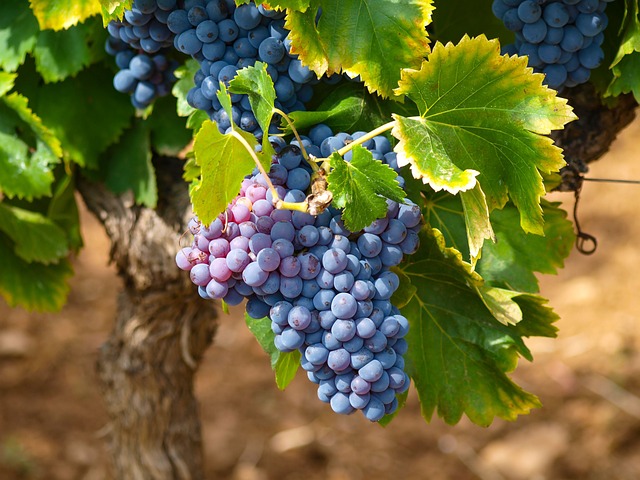Hello fellow farmers,
Many times vineyards face extreme cold temperatures, even down to the point where ice forms, which scares the farmer into fearing that this extreme cold will damage my vineyard, and if the wrong measures are taken to protect the vineyard, it can sometimes cause damage. Today we will look at the effects of extreme cold temperatures on the vineyard to avoid this damage. In general, the process of ice formation takes place only when the relative temperature of the air falls below 4°C for water or dew point to turn into ice. Generally the temperature does not fall below 4 degrees overnight, after five o'clock in the morning the temperature drops rapidly, we have water and dew point freezing in the early hours of the morning from 5:30 to 7, and then after sunrise the temperature starts to drop slowly. The roots slow down, and the beads in the bunch also stop swelling, if the dew freezes on some of the leaves and the beads and the snow accumulates for more than an hour and a half, the spots appear, the metabolic activity of the grape vine slows down but does not stop, photosynthesis continues, this is why we have Water freezing does not occur throughout the day, this state lasts only from dawn to eight in the morning, and even though the temperature is low throughout the day, the freezing point is not as much. Although the duration of sunlight is reduced, the production of carbohydrates (sugars CHO) with the combination of water, carbon dioxide and sunlight is slow. As the speed continues, one result is that cell division stops in the grape seed, in rare cases deformation may occur, seed swelling slows down, sugar production slows, anthrocyanin levels increase and acidity increases, and the seed begins to turn sour, at the same time that unnecessary chemical reactions occur. Fertilizer bombardment triggers bead cracking, as root function is slowed down, resulting in a lack of nutrient supply, which means bead swelling slows down and the time it takes for grape formation to lengthen. It is as follows, when the dew point freezes in the morning between 5:30 and 7:00 a.m., smoke should be made in the garden at this time and the drip set should be turned on and watered, the water in the well or farm is hot in the morning and the temperature in the garden does not fall below the freezing point due to the smoke. If the fire is smoked in five places, the dew point will not freeze in the garden, and leaves will not be damaged and stained by ice. Photosynthesis will continue, with occasional small doses of NPK sprays, during which time the SV fruiter drip down will keep the roots efficient even at such low temperatures, in fact, during this time the roots should have a negative charge, which the SV fruiter produces unconsciously. , at the same time spraying will produce a small amount of SV Ketone + Chelated Mix Micro Nutrient or 13:00:45 or 19:19:19 to create a positive charge on the leaves. The leaves, roots, and buds will continue to flower and produce sugars, and your garden will be safe even in extreme cold. The detailed measures can be done as follows, 100 kg of SV fruiter per acre should be placed under dripper and watered under low pressure every morning between 5:30 and 7:00, next day five liters of SV size builder per acre should be released, 250 ml of SV ketone + 100 g of chelated mix in 200 liters of water for spraying. Micro Nutrient + 300 g 13:00:45 should be mixed together and sprayed, after three days one liter of SV ketone should be released from the drip, so that the swelling will continue even in extreme cold without any distortion of the beads.
author-
Mr. Subhash Chandra Karale Sir
Director, SV Agro Solutions
